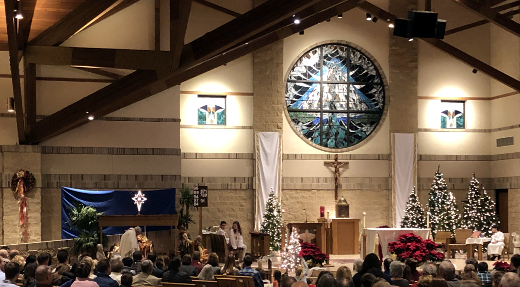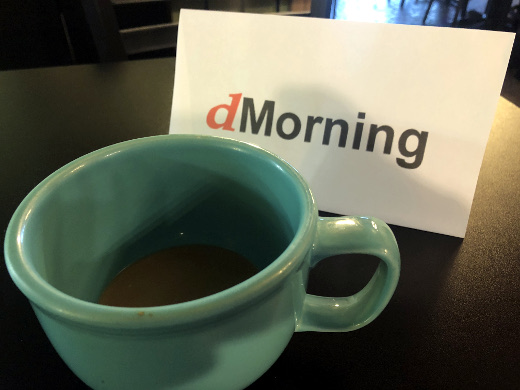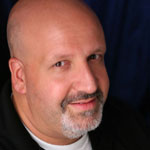Merry Christmas 2018
To those who believe, Merry Christmas!
To those who do not, have a great Tuesday!
Pictured is the Christmas Eve mass at St. Bernadette Church in Appleton, Wisconsin.
This is from The Hot Iron, a journal on business and technology by Mike Maddaloni.
Did you enjoy this? Subscribe to The Hot Iron by RSS/XML feed or Read by Email.
Announcements • Diversions • (0) Comments • PermalinkdMorning Tech Creative Networking Event at Dealer Inspire on December 14
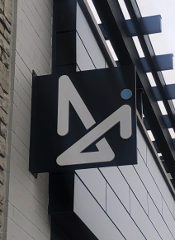 dMorning is an informal networking meetup event for people who work in the tech and creative fields in and around Northeast Wisconsin.
dMorning is an informal networking meetup event for people who work in the tech and creative fields in and around Northeast Wisconsin.
Our next event will be on Friday, December 14, 2018, from 7:30 – 9:30 am at the new offices of Dealer Inspire, 423 West College Avenue, Appleton, WI 54911. Dealer Inspire is an innovative, scrappy disruptor building unprecedented websites and technology to help car dealerships sell more. Special thanks to Dealer Inspire for hosting our next event!
Though there's no cost, please RSVP – you can do so with Eventbrite or Meetup.
dMorning was started to provide a casual environment for those who work in the technology and creative fields in Northeast Wisconsin to meet, network and have a beverage of choice. The idea is to meet in the morning before the day gets hectic. There are no set rules and no agenda. More information is available at dMorning.com.
Hope to see you there!
This is from The Hot Iron, a journal on business and technology by Mike Maddaloni.
Did you enjoy this? Subscribe to The Hot Iron by RSS/XML feed or Read by Email.
Announcements • dMorning • (0) Comments • Permalink
My Takeaways from Poetry Magazine March 2017
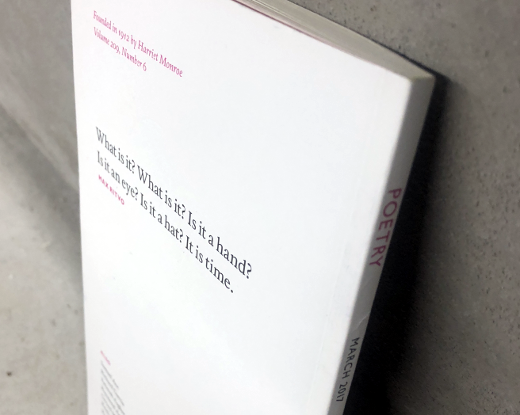
As my personal exploration into the world of writing continues, despite the infrequency you may notice here on this little blog, I have been reading more literary publications. These have included various Web sites, plus I continue to read December magazine’s biannual publications. Though I don’t put pen to paper as much as I’d like to, I am gaining inspiration for when I do through the works of others.
I happened upon a copy of Poetry Magazine a while back in a doctor’s office waiting room. Where I had heard about the century-plus year old poetry magazine, I had never read a copy. As the March 2017 copy before my eyes was in good company with other outdated periodicals in the seating area, I took it upon myself to put this edition to good use and literally took it. When I finally got to curl up with the paperback magazine, I not only moved forward with it on my creative journey, but I also took a fresh look back as well. I share those with you as my takeaways.
My knowledge of poetry is grade-school basic – If you’ve read The Hot Iron over time, it would come as no surprise that I spent more time in the computer lab than in any classroom. As a result, liberal arts classes like English and language never got the attention, years later I realize, they should have. When I think of a poem, I think of Dr. Seuss or the Man from Nantucket. Granted I have read some poetry in recent years in December magazine, after reading a pure poetry publication I realized my learning about this literary style ended around middle school.
The more I read the more I enjoy it – There are a wide variety of styles of poetry, some close to what I remember from school with meter and rhyming, and others where for me it’s hard to follow the formatting and subject of the poem. But as with many things, the more you are exposed to it, the more you will like it.
Learning that relates to you means more to you – The March 2017 edition of Poetry Magazine closes with what is called “Comment” which itself is not poetry, but rather a dialogue on poetry. Among the different poems, poets and styles the author of this piece discusses includes Stopping by Woods on a Snowy Evening, a poem by fellow New Englander Robert Frost. This was a poem I remember from childhood, mainly due to said geographic affiliation as well as the last lines of the poem which were planted in the back of my head back then, “And miles to go before I sleep, And miles to go before I sleep.“ After reading this in the final pages of the journal, it helped round out what I have been reading and experienced now with something I read and experienced many years ago.
Poetry Magazine is a periodical you can subscribe to or find at higher-end newsstands (if there is even one by you). Their Web site has a wealth of poetry to explore and read, and they also offer a Poem of the Day newsletter. With our inboxes filled daily with things we don’t want to read, it’s nice to have an interesting diversion among the unwanted refuse. As I pass along all that I have read, I neatly placed this copy of Poetry Magazine among some newspapers on the table of the coffeeshop where I wrote these takeaways. Perhaps someone else will learn something as they fulfill the promises they keep.
This is from The Hot Iron, a journal on business and technology by Mike Maddaloni.
Did you enjoy this? Subscribe to The Hot Iron by RSS/XML feed or Read by Email.
Book Take-Aways • Diversions • (2) Comments • Permalink
Next dMorning Tech Creative Networking Event on November 9
The next dMorning meetup networking event will be on Friday, November 9 from 7:30 – 9:30 am at Copper Rock Coffee Co., 210 W. College Avenue in Appleton, Wisconsin.
dMorning was started to provide a casual environment for those who work in the technology and creative fields in Northeast Wisconsin to meet, network and have a beverage of choice. The idea is to meet in the morning before the day gets hectic. There are no set rules and no agenda. More information is available at dMorning.com.
Hope to see you there!
This is from The Hot Iron, a journal on business and technology by Mike Maddaloni.
Did you enjoy this? Subscribe to The Hot Iron by RSS/XML feed or Read by Email.
Announcements • Business • Technology • (0) Comments • Permalink
My Guest Lecture at University of Wisconsin – Oshkosh on Consulting
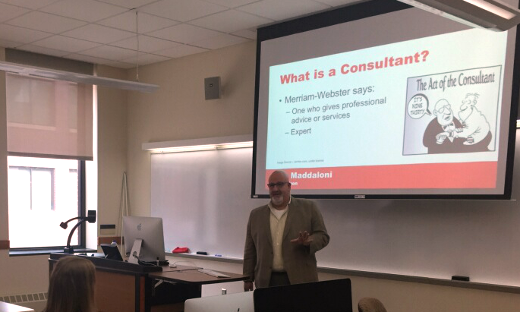
Great interactive classroom instruction coupled with real-world work opportunities provide the best educational experience for students. When you have the chance to help make that happen, it’s extremely rewarding. That happened for me recently as I was a guest lecturer at a university class.
I was honored to be asked once again by Dr. Sara Steffes Hansen, a professor at University of Wisconsin – Oshkosh and chair of the Journalism department. Her class, Application of New & Emerging Media, provides that educational experience working with entities in the community on their social media and beyond. As her students make on-site visits to their clients, I was asked to speak to the class on the topic of consulting.
Last year I spoke to students in the same class, but after their client visit, where this year it was ahead of it. As meeting face-to-face with clients involves many factors – factors many don’t execute on well – I incorporated a role play into the interactive lecture. With a “volunteer” student, I did an improvised sketch where the student was the client and I was the bumbling, unprepared consultant. This segued into my discussion on preparing for and executing on the on-site visit, as well as the follow-up and deliverables from the class assignment.
For me, this guest lecture served many purposes. As I have learned from others, both in the classroom and in the real world, I welcome the opportunity to share my experience and “war stories” with the students. As someone who still thinks and works like a consultant, poor consulting skills from others stick out like a sore thumb soaked in sriracha and lit on fire! If this lecture can help guide students down the path of honing their consulting skills, then the world will be that much better.
This class is part of the UW – Oshkosh’s Interactive Web Management major, which is a combination of curricula from Computer Science, Marketing, Journalism and Information Systems. It is a unique major, mashing up key aspects of each of these areas to offer a comprehensive educational background for how companies today are staffing roles in marketing and tech.
Where you needed to be enrolled in the class to get the full lecture, I am sharing my slides. You can link to the slides from my guest lecture here on SlideShare, or view them embedded below. I am planning on coming back to the class at the end of the semester to watch their client presentations. In the meantime I wish great success to the students of Journalism 61-440!
This is from The Hot Iron, a journal on business and technology by Mike Maddaloni.
Did you enjoy this? Subscribe to The Hot Iron by RSS/XML feed or Read by Email.
Announcements • Business • Strategize • Technology • Thrive • (0) Comments • Permalink

